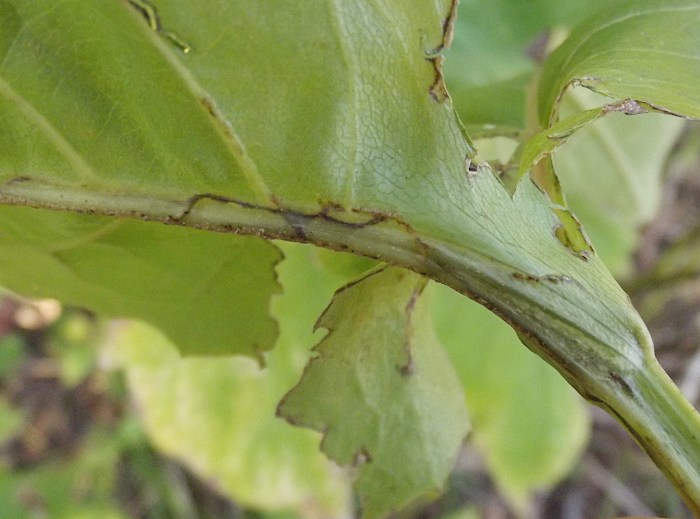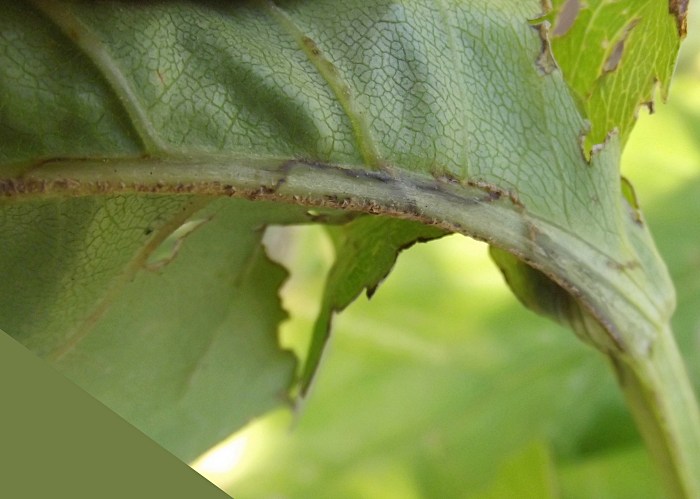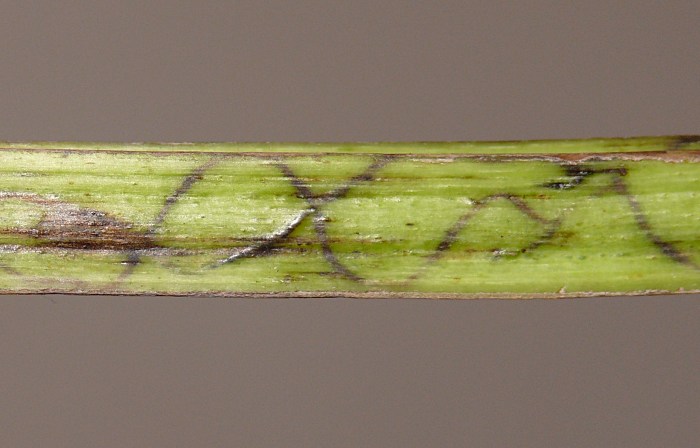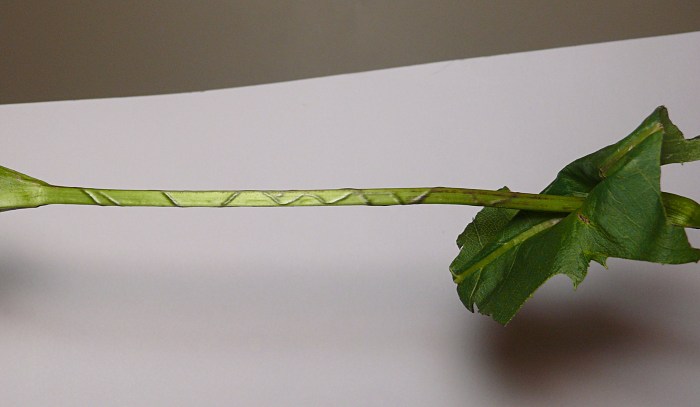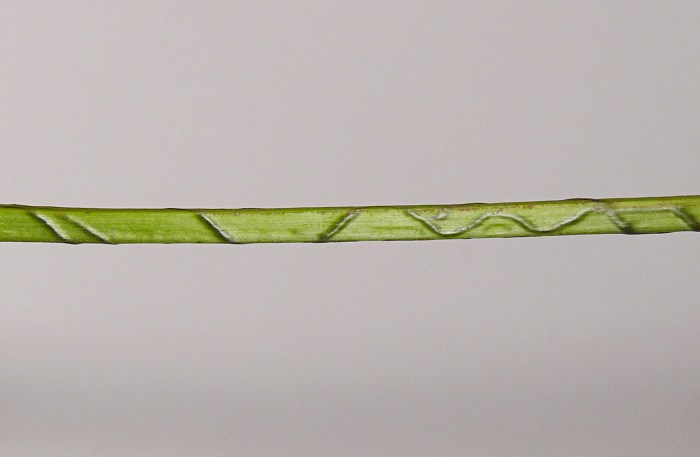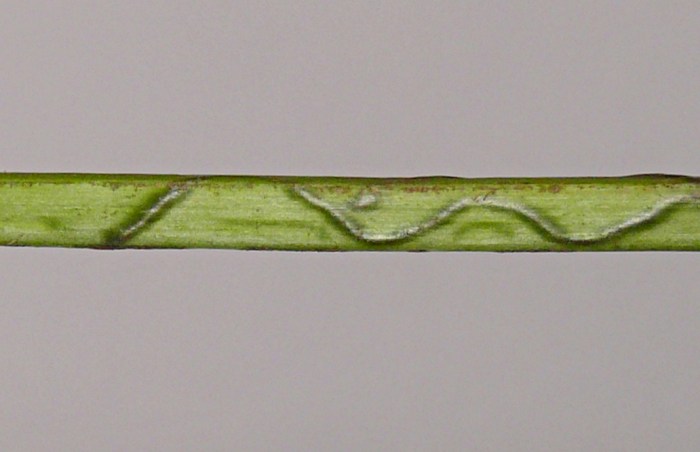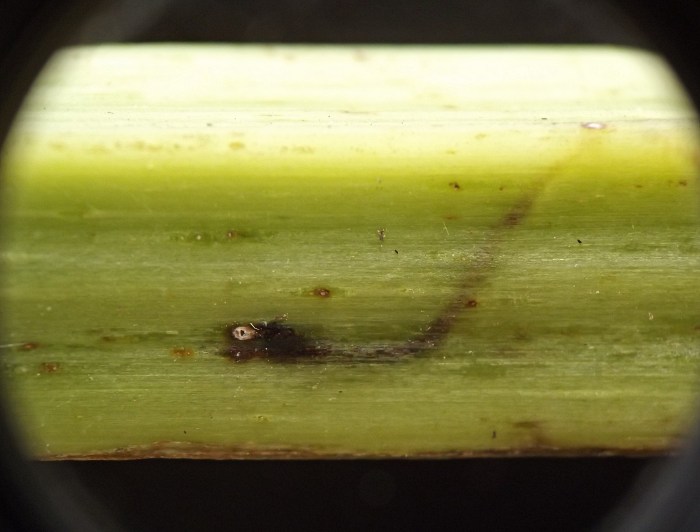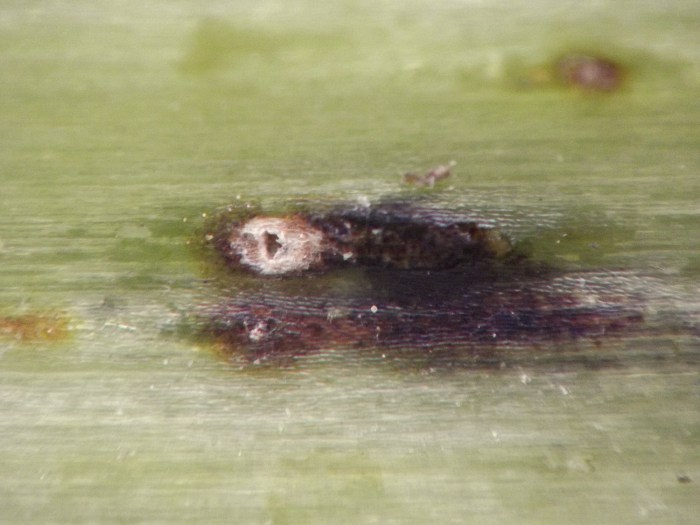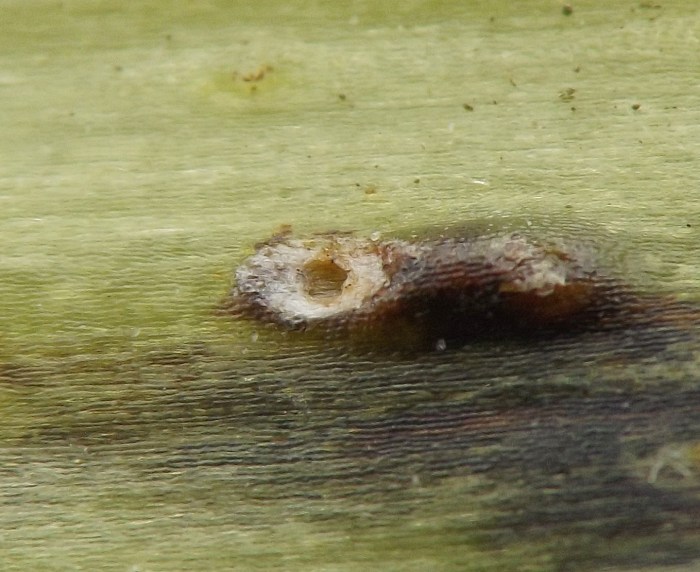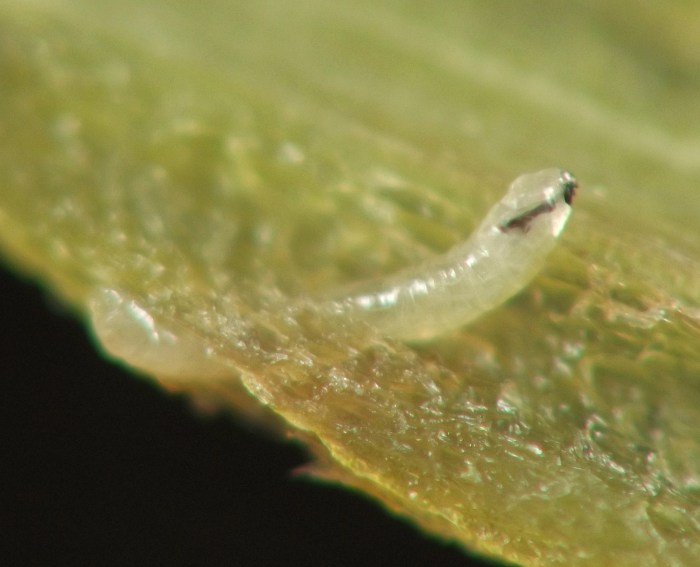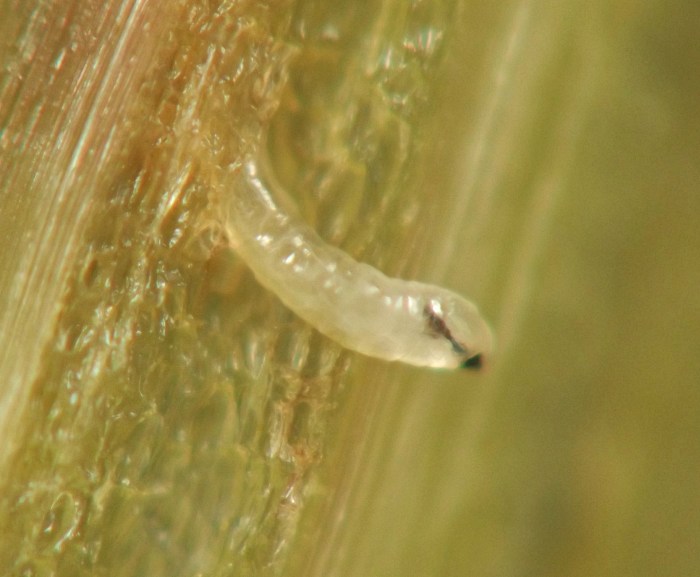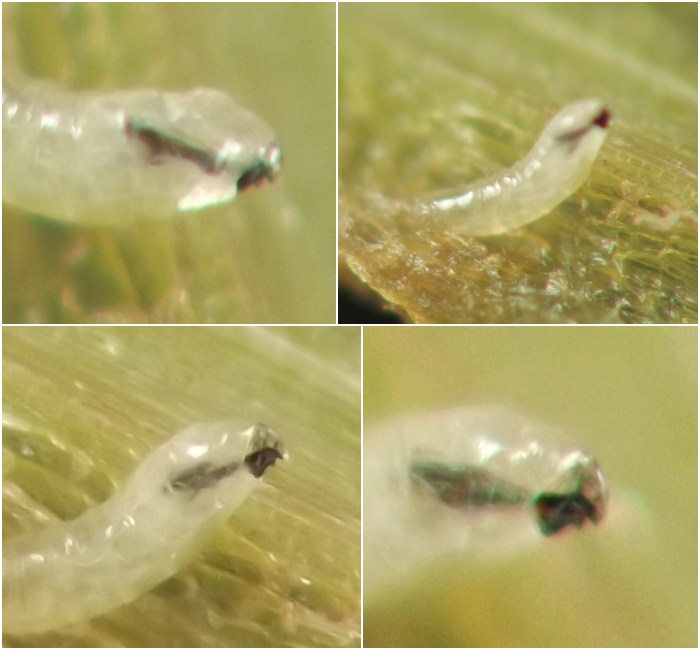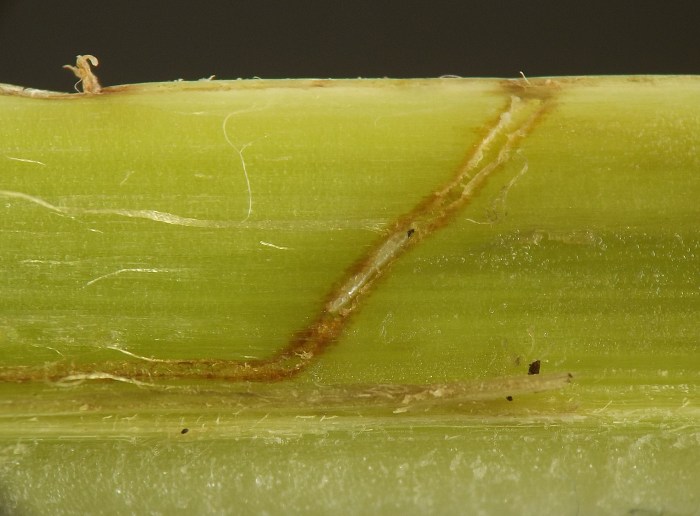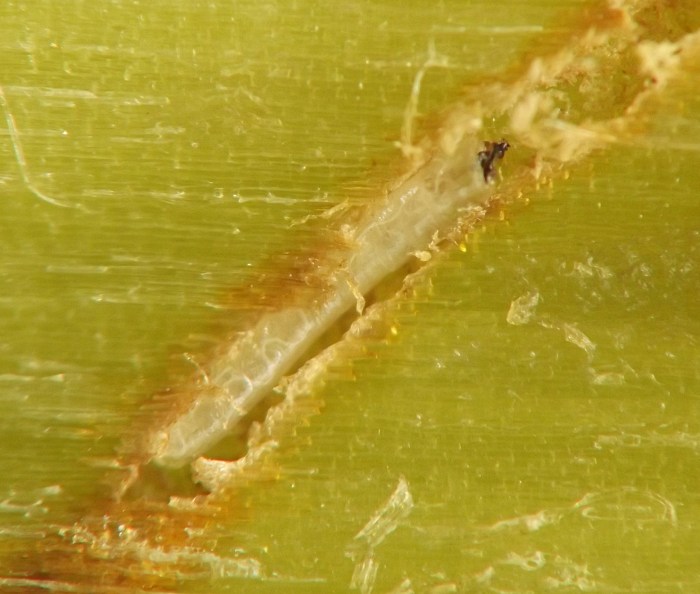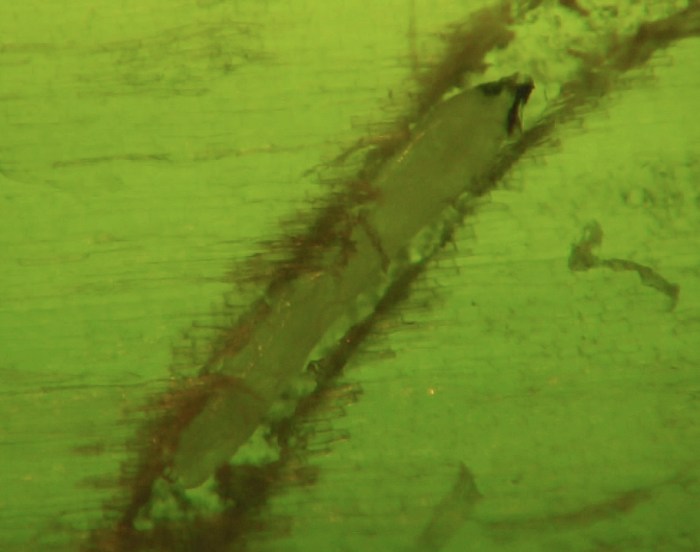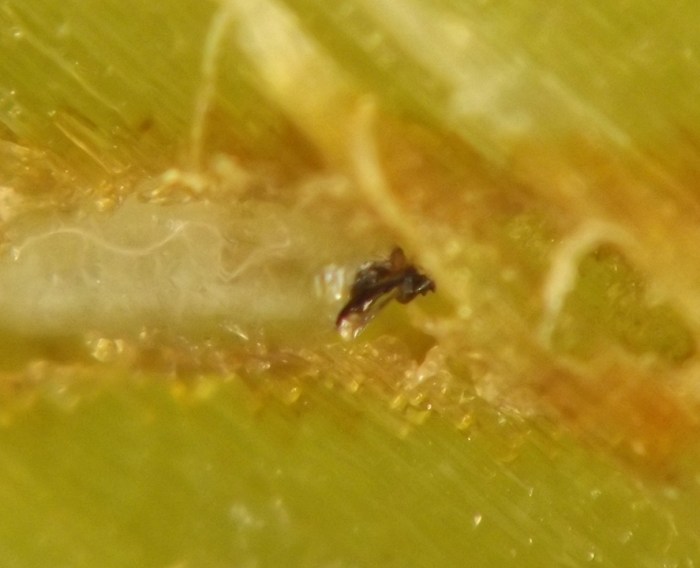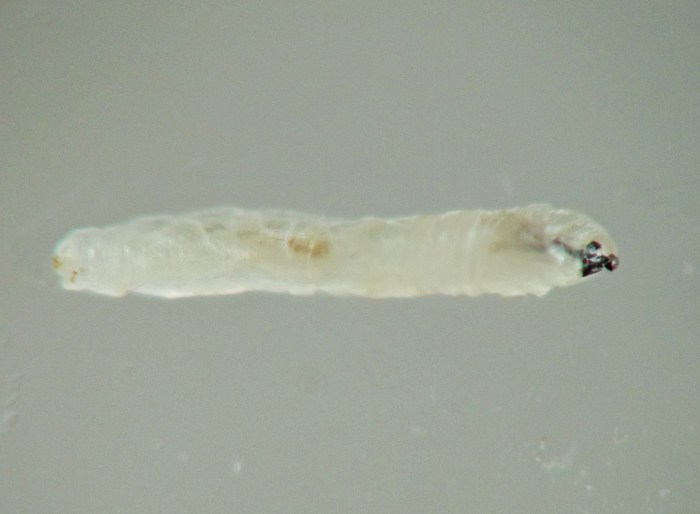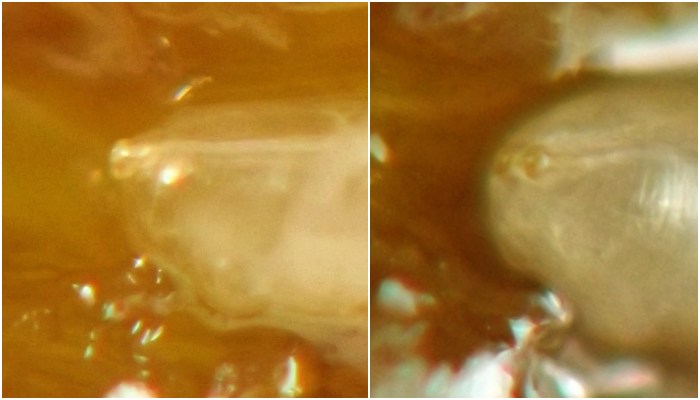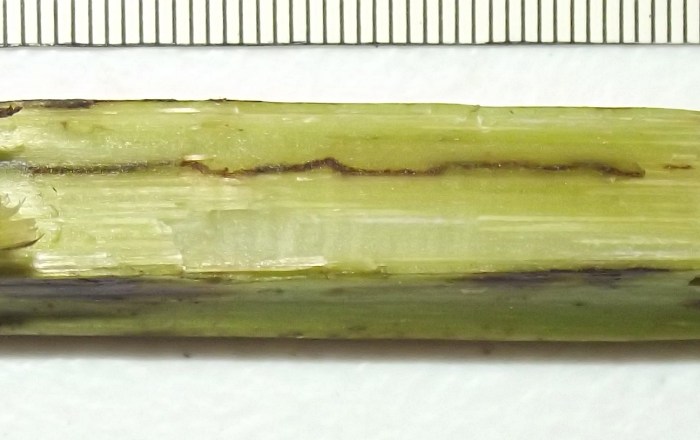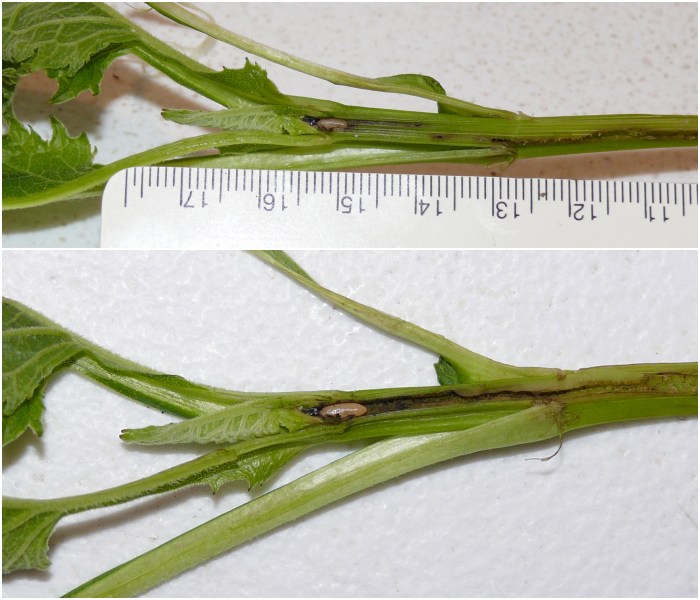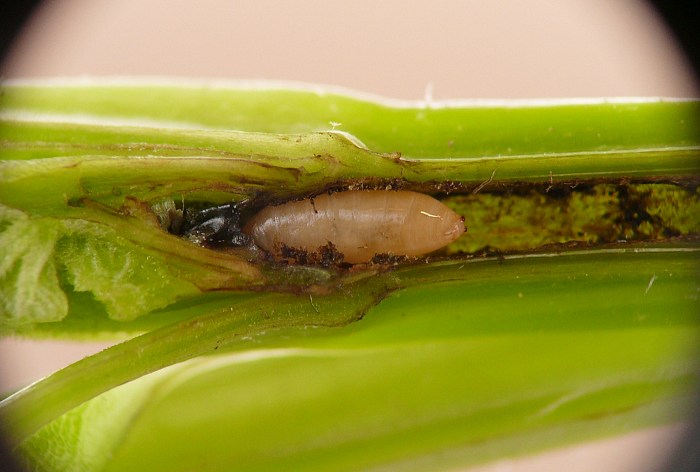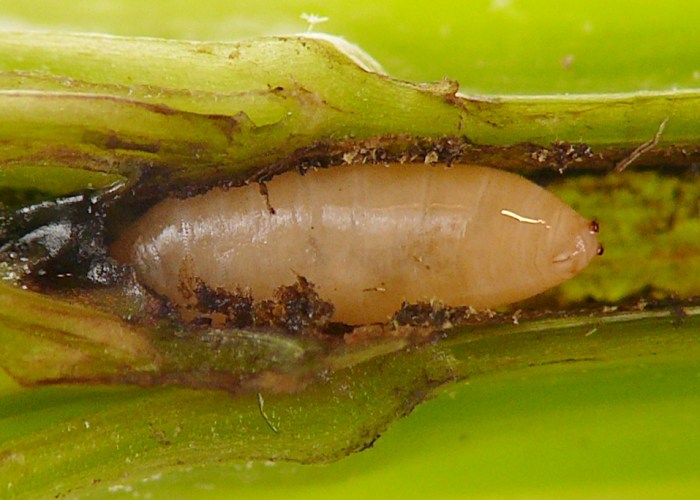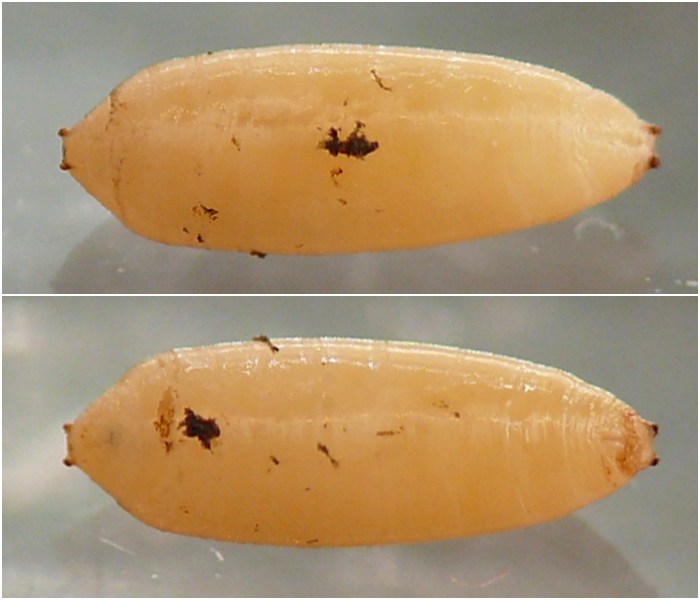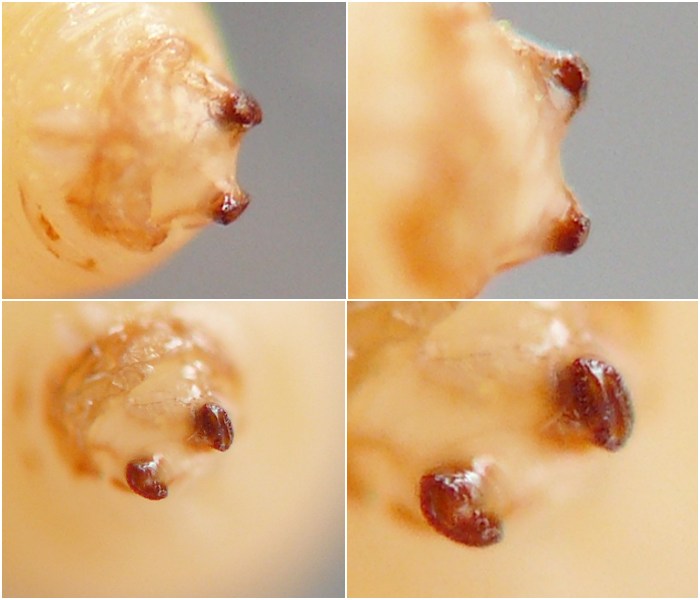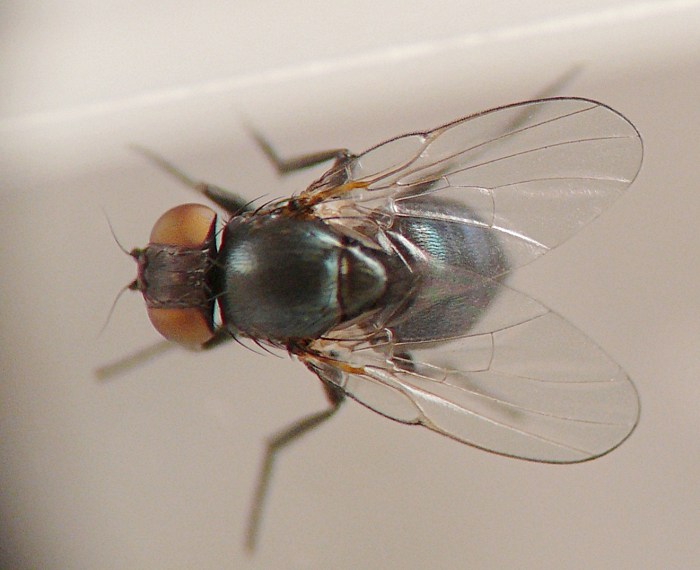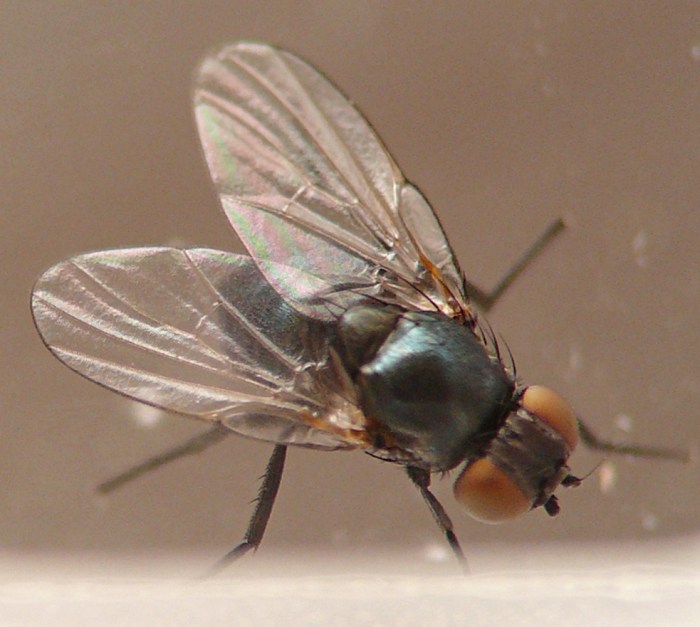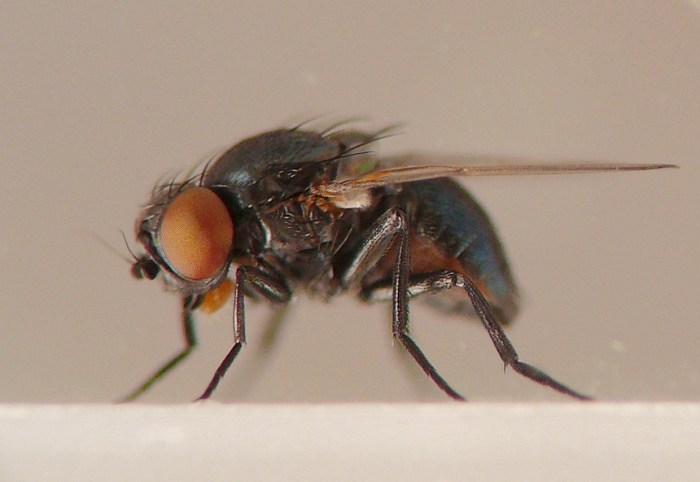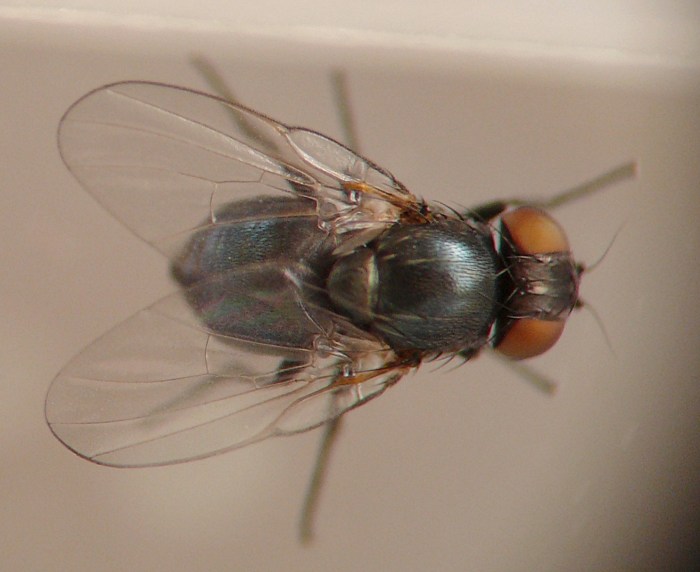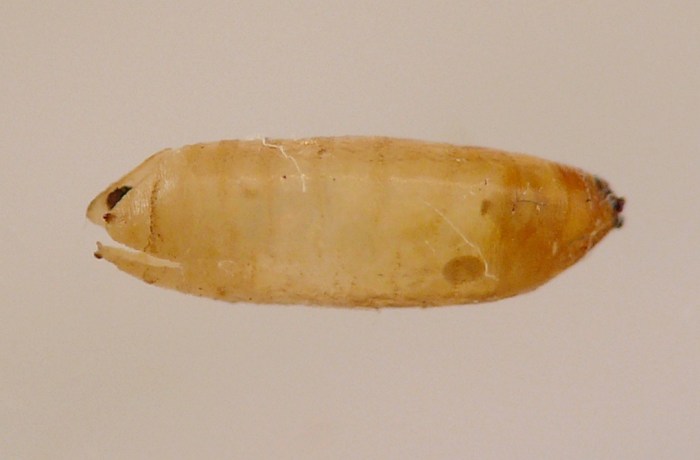Stem miner/borer (Diptera: Agromyzidae) in Silphium [0506]
| Order | Diptera |
|---|---|
| Family | Agromyzidae[T,E,L,P,A] |
| Lower taxon | cf. Melanagromyza sp. |
| No. spp. involved | One confirmed |
| Feeding mode | Stem miner/borer |
| Host plant | Cup plant, Silphium perfoliatum (Asteraceae) |
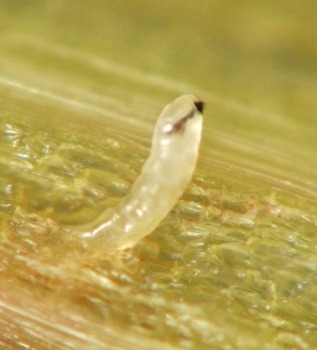
This dipteran miner/borer was first detected in the current study in 2020, via observation of the externally visible, shallow, blackened tunnels it creates in midribs and stems of the host. The tunnels tend to meander irregularly across and around the stem, sometimes forming a spiral or sinusoidal pattern. The tunnels also wind through all depths of the stem and change color along their length, from black to brown to occasionally white/green, so that they can be quite difficult to follow in places.
In a few cases, the author was able to successfully locate a larva inside its tunnel. In one instance the tunnel was shallow enough that the larva's cephaloskeleton could be faintly seen through the outer wall of the stem. Such larvae appeared to be mostly early to middle instars. They were pale whitish with black cephaloskeletons and a pair of very small, light brown, ringlike posterior spiracular areas. The earliest observation of a larva occurred on 29 June.
Mature larvae or puparia have not yet been located in the current study [Update: adult reared in 2025 -- see below]. In two examined stems, the tunnels straightened out as they moved down the stem and, in the lowest 15-25 cm of stem, the tunnels seemed to make a beeline for the belowground parts of the plant. Even these straight lower stem tunnels had a relatively small diameter, suggesting they were made by early- or middle-instar larvae that still had a ways to go before reaching maturity. It is assumed that larval development is completed in the crown or roots of the plant, but this has not yet been confirmed. Several senesced stems with old feeding sign of early or middle instar larvae were searched in winter, with particular attention given to the lowermost portions of the stems near ground level, but no puparia could be found in the stem interiors, suggesting pupation may take place in the belowground parts or off the plant.
Some aspects of the larva's cephaloskeleton, along with the posterior spiracles and the general appearance of the larval body, are consistent with Agromyzidae; one photo appears to show the rear arms of the cephaloskeleton in a configuration typical for the subfamily Phytomyzinae. However, these details were not sufficient to clinch the subfamily or even family-level identification, so the fly is only identified to order here for now.
Update, 2025: On 18 May the lowermost stem leaves on a shoot of the hostplant (the shoot ca. 20 cm tall) were found to contain tunnels in their petioles. The next day the shoot was harvested and its interior examined. It showed extensive tunneling in the interior, with ~60% of the volume of the upper half of the shoot hollowed out. A large, recently formed agromyzid puparium (length 5.4mm) was positioned in the tunnel at the very tip of the shoot. A much smaller diameter tunnel was visible in the cross section of the cut end of the shoot base, and this tunnel was contiguous with the extensively hollowed area higher in the shoot and also with the tunnels leading into the leaf petioles. This suggested the larva had overwintered in the crown and then moved up into the shoot, where it tunneled in the leaf petioles and stem before pupating at the shoot tip.
The tunnel walls in the lower portion of the shoot were dark brown or black in color, while the fresher excavation higher in the shoot and the tunnels in the leaf petioles were less darkly discolored. A dead stem from last year, which connected to the plant crown near the base of the shoot, contained tunnels of the type observed in mature stems of the host in previous years (described above), leading from the shallow exterior into the pithy interior. These tunnels were much smaller in diameter than the tunnels high in the spring shoot, but approximately the same diameter as the tunnel visible in the cross section of the shoot base. It was therefore assumed that the young fly larva made the tunnels in last year’s stem while the stem was still alive during the 2024 growing season, proceeded into the crown to overwinter, then migrated into the new shoot in spring, in which it grew to maturity (creating wider tunnels in the process) and pupated.
Interestingly, this affected shoot, besides the subtle tunnels in the petioles of the lowermost leaves, showed no obvious external sign of the extensive tunneling in the interior. The leaves of the shoot tip appeared to be healthy, as did all the other leaves and the shoot itself, with no wilting or dieback and none of the stem tunneling showing through to the shoot exterior.
An adult agromyzid, cf. Melanagromyza sp., emerged from the puparium on 14 June. The fly was one of the largest agromyzids the author had ever reared, with body length ca. 4.0 mm (excluding wings) and wing length ca. 3.3 mm. It possessed a shiny blue iridescence on the dorsal surface of the abdomen and a somewhat duller, more blue-green iridescence on the dorsal surface of the thorax. The underside of the abdomen was partly red-brown in color.
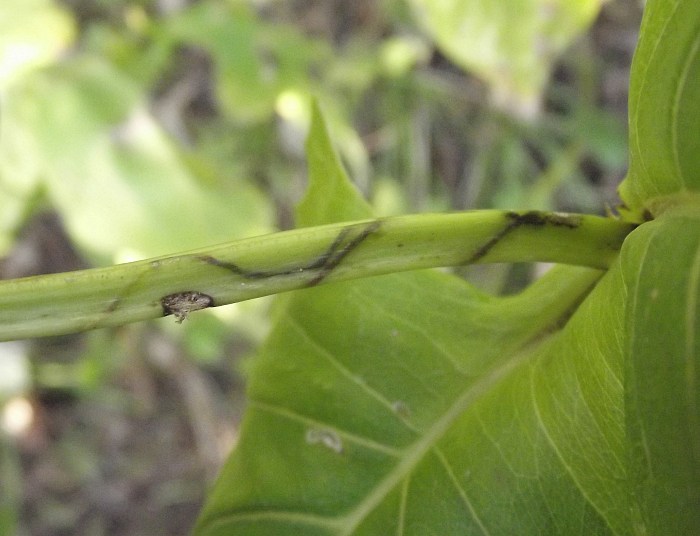
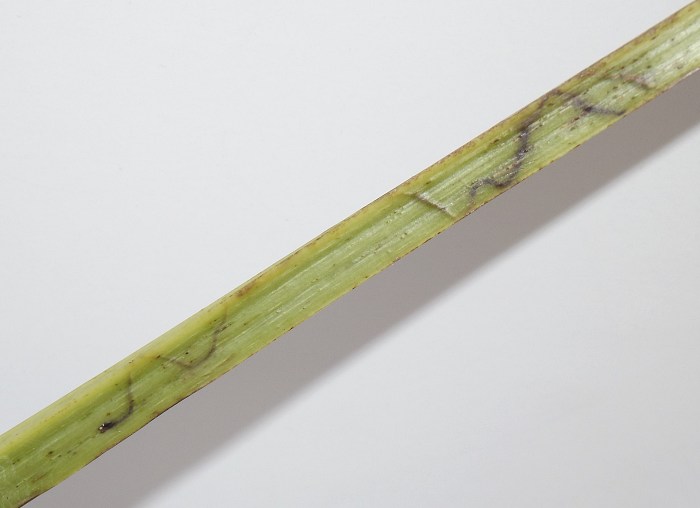
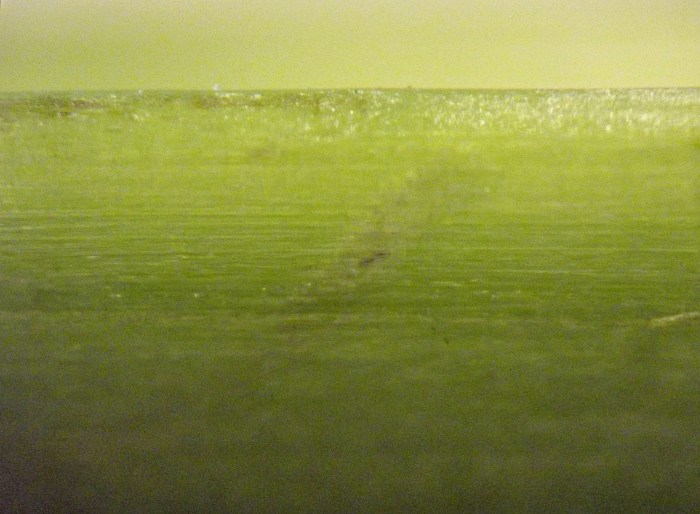
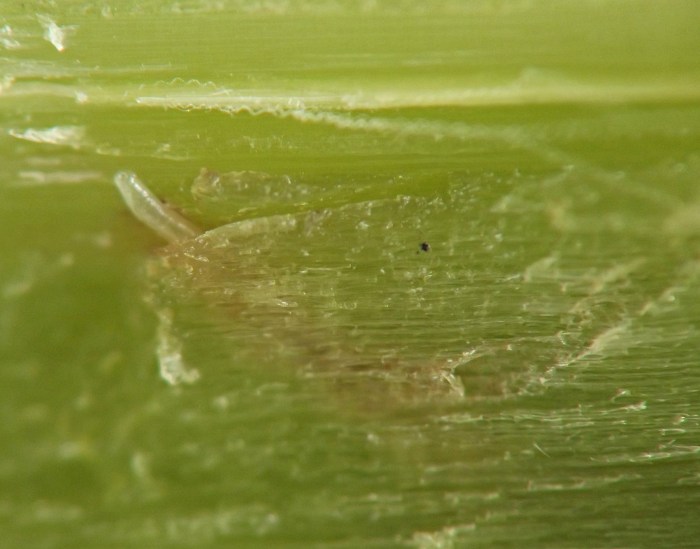
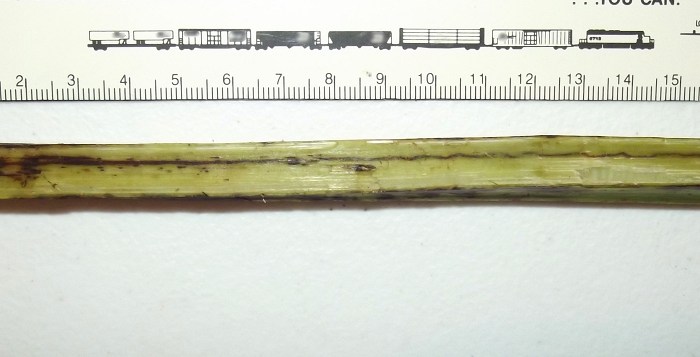
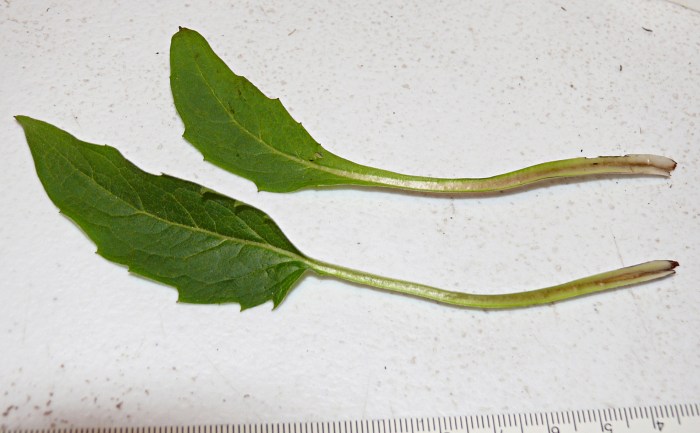
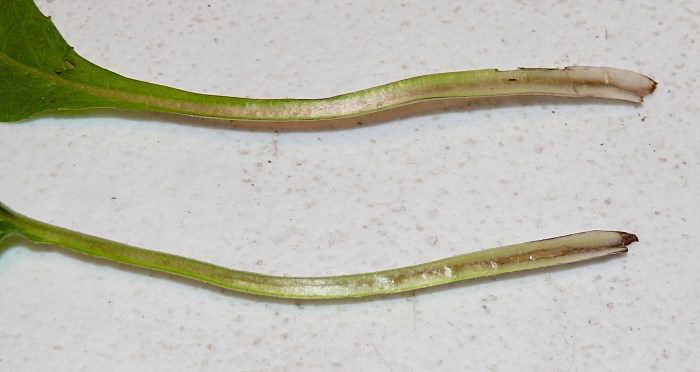
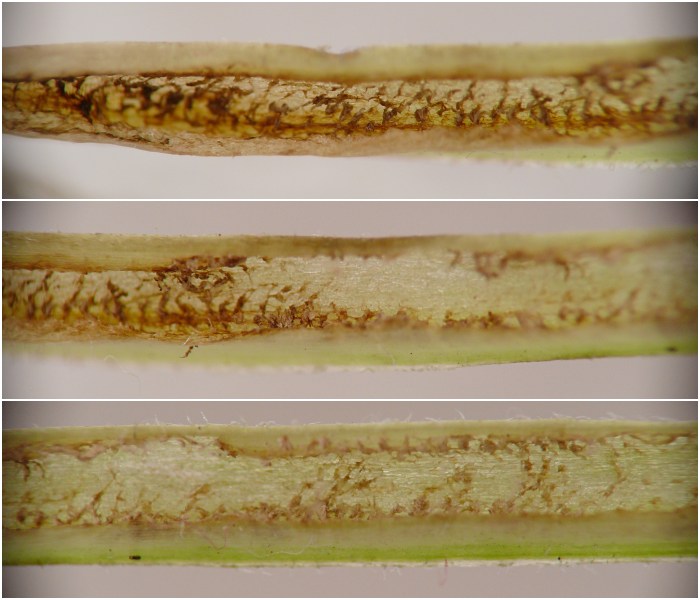
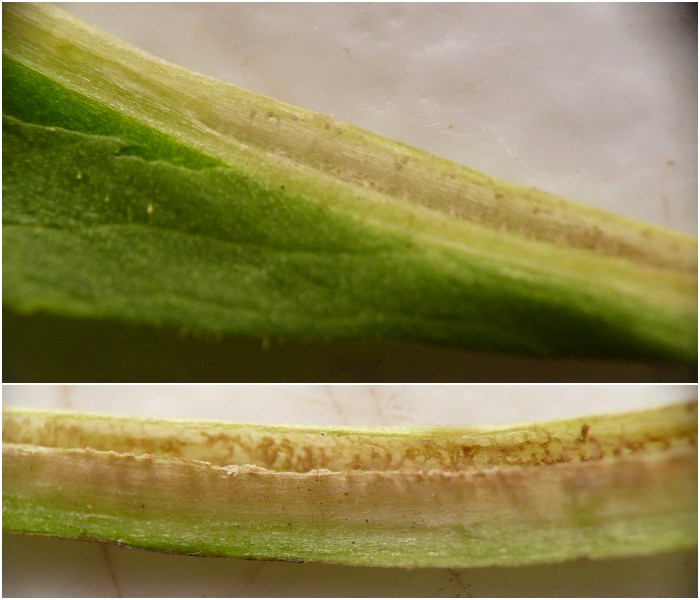
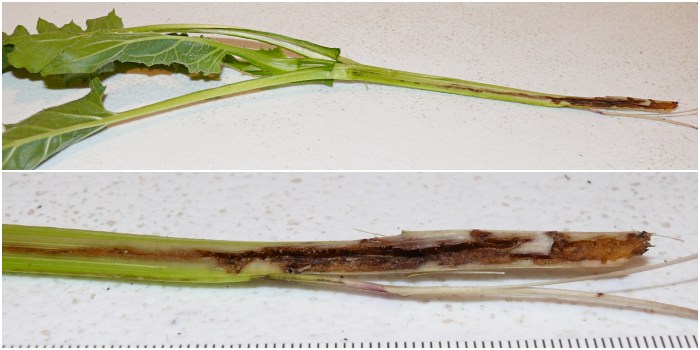
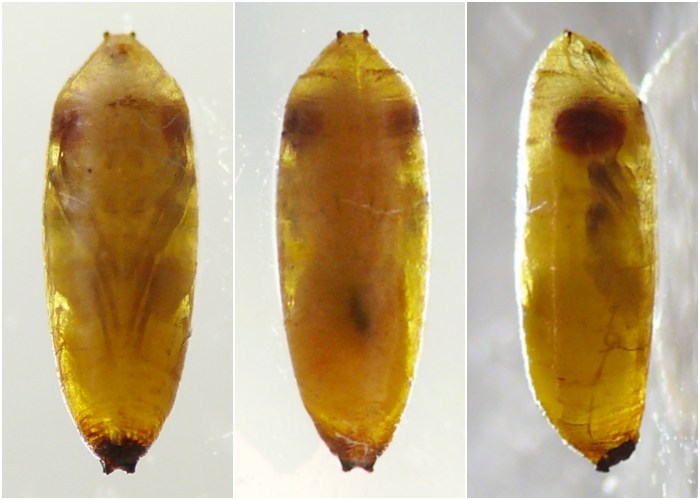
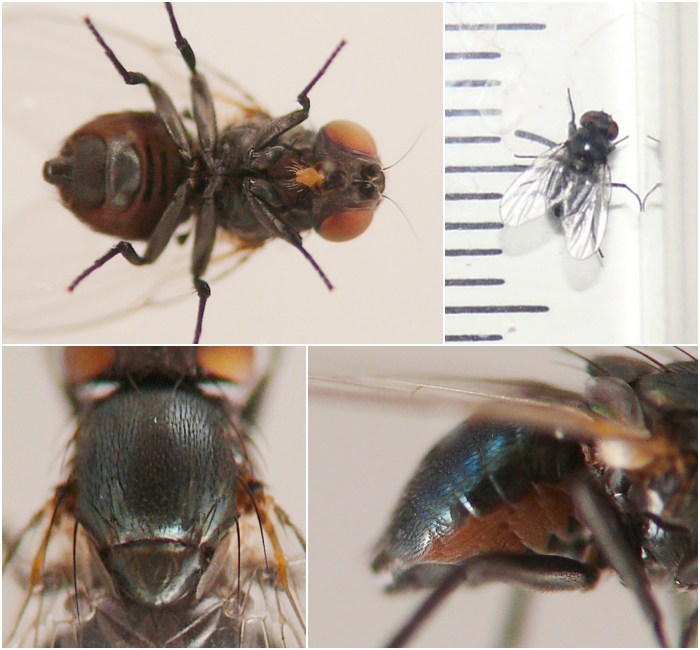
Specimen data for images
Field photos taken 10/06/20 (01-03); coll. 09/30/20, photos same day (04, 11-14); coll. ~08/07/22, photos same day (05-06), photos 08/07/22-08/11/22 (20-25, 29), photos 08/30/21 (26); coll. ~08/16/22, photos same day (07-09); coll. ~09/18/22, photos same day (10, 27-28); coll. 06/28/21, photos 06/28/21-06/29/21 (15-19); coll. 05/18/25, photos same day (30-34); coll. 05/19/25, photos on 05/20/25 (35-40), 06/07/25 (41), 06/14/25 (42-46), and 06/15/25 (47).
References
[none]
Page created 12/02/24. Last update: 06/16/25



